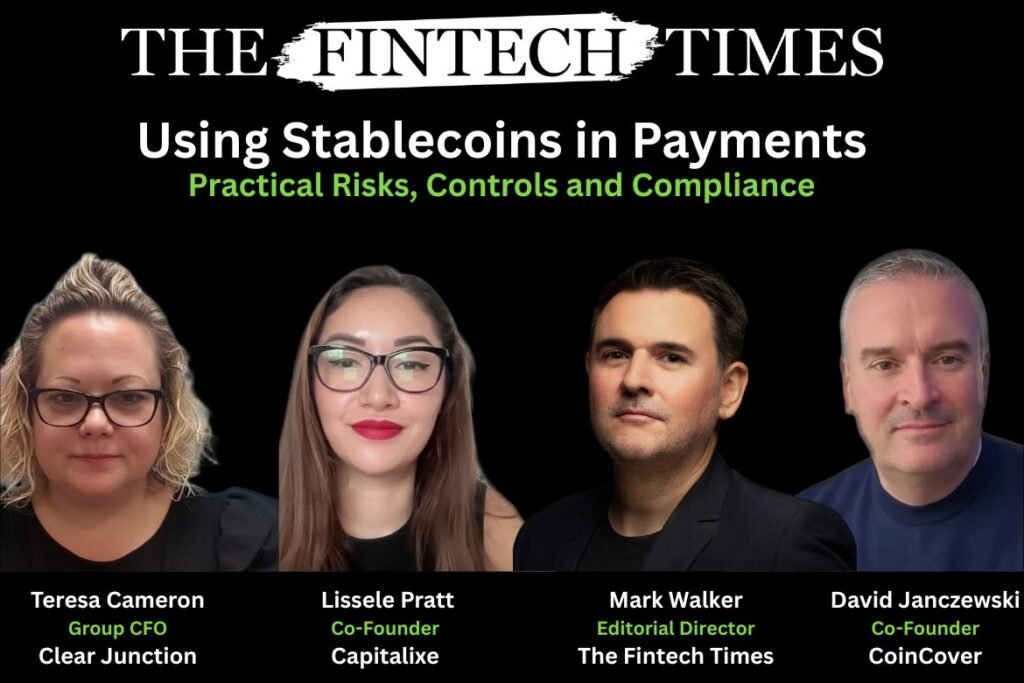Stablecoins are rapidly emerging from the digital asset periphery to become a core tool in the global payments ecosystem, offering efficiencies that legacy financial rails struggle to match. However, this shift is forcing Payment Service Providers (PSPs) and FinTechs to balance the lure of instant settlement with the complex demands of regulatory compliance, digital security, and consumer trust.
The consensus among industry experts is that the main catalyst for adoption lies in cross-border transactions, where stablecoins deliver material benefits. Lissele Pratt, co-founder of Capitalixe, noted the profound impact this is having in high-friction markets. “Stablecoins can help a lot of payment service providers streamline cross-border payments, reduce transaction costs and settle transactions a lot far quicker than traditional payment rails like SWIFT,” she explained. Pratt has seen this disparity first-hand when working with clients sending funds from Europe to regions like Asia, Africa, or Latin America, where SWIFT settlements can take up to three days, while stablecoins offer near-instant speeds at a “much reduced cost”.
While the speed is compelling, stablecoins are proving their utility in the back-office before fully hitting the consumer market. Teresa Cameron, Deputy CEO of Clear Junction, views stablecoins primarily as a crucial treasury tool. “For us, we see it very much as a treasury tool and it’s a way to manage liquidity,” Cameron stated. She highlighted three key use cases where fiat and digital assets converge: instant cross-border settlements, access to out-of-hours liquidity outside of the traditional nine-to-five banking window, and fostering financial inclusion in underserved areas. She also noted an interesting trend: “We’re seeing the pick up business to business before consumers for this payment trend, which is probably very different to other payment trends that have come previously”.
Underpinning this entire movement is the challenge of risk, which is materially different from traditional payments. David Janczewski, co-founder of CoinCover, stressed that the core difference is the nature of the asset itself, which he refers to as ‘digital cash.’ “If I hand you a banknote, I’ve handed it to you and kind of all transactions are final,” he explained. This finality is the core challenge. Unlike traditional banking, there are no established reversal or recourse mechanisms if a user loses their private key or sends a transaction to the wrong address.
“If you lose access to your private key or you lose access to your wallet because you forget… that doesn’t quite exist in the same way when you’re holding digital assets,” Janczewski said, identifying loss of access as a major risk.
This raises the critical issue of trust. Consumers now expect bank-level protections, even for digital assets. Pratt stressed that to succeed, PSPs must ensure strong safeguards, transparency, and clear liability structures.
Cameron agreed that liability is non-negotiable for PSPs. “From the minute you receive it to the minute that you dispose of it, it’s your responsibility to look after it,” she confirmed. While PSPs can adapt existing risk principles, they must address new threats like cybersecurity and operational resilience when working with non-bank players. Instead of relying on a compensation scheme—which she considers a “last resort”—PSPs should focus on prevention. This includes using tools like whitelisting, penny testing, and screening wallets to verify addresses and filter inbound transactions before they reach a client’s account.
Looking ahead, the experts anticipate a proliferation of stablecoins, driven by demand from migrant workers for remittance and, secondarily, by financial innovation around savings and returns. Cameron hoped to see greater collaboration between banks, which have the trust, and PSPs, which possess the technology and infrastructure. Janczewski suggested that the emergence of Central Bank Digital Currencies (CBDCs) might provide an interoperability layer below stablecoins, further driving adoption.
The journey of stablecoins in payments is only beginning, but with increasing regulatory clarity from frameworks like MiCA and the US’s Genius Act, the foundations for mainstream use are solidifying. As the market develops, success will belong to those providers who can most effectively translate crypto’s efficiency into a system consumers trust.

